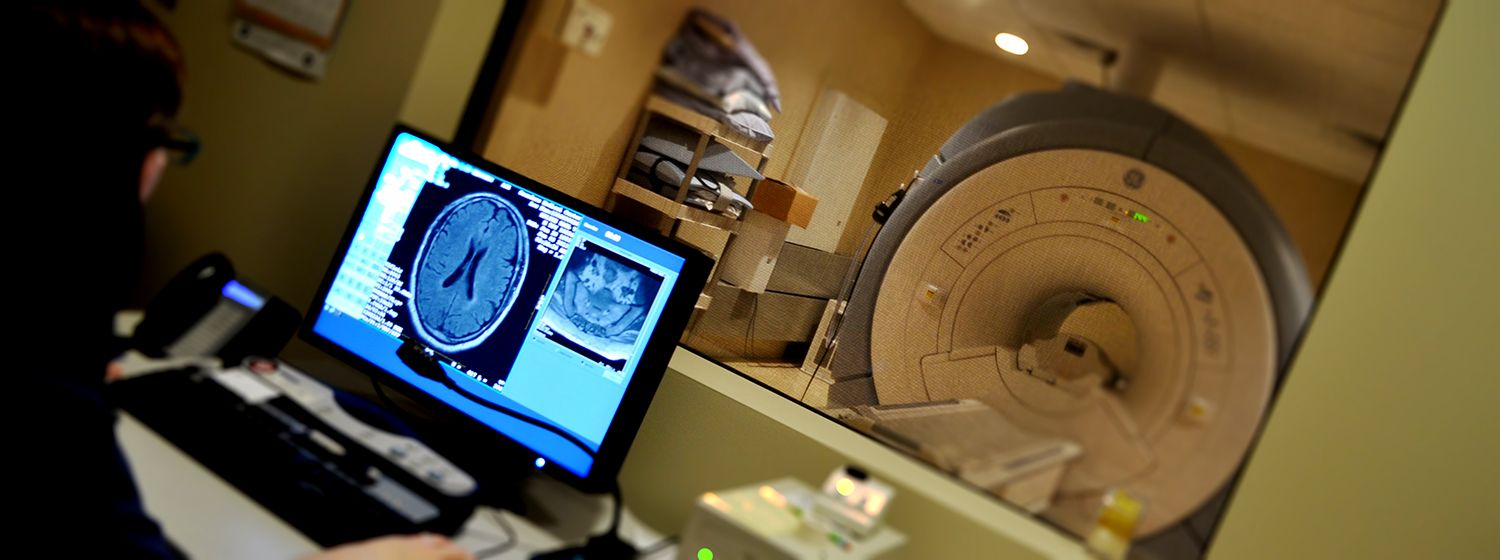
Magnetic Resonance Imaging - MRI
Magnetic Resonance Imaging uses radio waves and a strong magnetic field to produce images of body tissue and organs. The magnetic field excites and then relaxes protons of the body causing an emission of radio signals. The signals are then processed by a computer to produce an image.
MRI Scanner
The MRI scanner is a circular tube that has an opening in the center through which the body passes through. The opening is longer than that of a CT scanner. The scanner produces loud noises during the procedure that will require you to wear ear plugs or a head set to protect your ears.
Clothing
You will possibly be asked to change into a gown for some MR scans. If you are not required to change clothing, you must be wearing metal free clothing. You may be asked to remove things from your pockets and also jewelry, watches, wallets, removable dentures, hearing aids, glasses or body jewelry prior to your scan. You will be asked in the form of written questionnaire a history of your condition and of any previous exposure to metal that may be in your body. It is very important that you complete the form with extreme accuracy and inform the technologist of any metal that may exist in your body. The magnetic field is strong and may pull on certain metal objects in the body. Technologists will ask several questions regarding the presence of a pacemaker, brain aneurysm clips, artificial limbs, or any metal screws or surgical clips. You may also be asked if you have ever had a gunshot to the body or if you have any shrapnel in your body. If the possibility of metal exists in your body, you may need to have an X-Ray to verify its existence. If metal is present, the procedure may not be able to be performed.
Time
Your test will be ordered by your physician. It may be required or suggested that you check with your insurance carrier for pre-certification or pre-authorization in order to obtain your policy's stated benefits. This may take some time depending on the accessibility of an insurance representative. The procedure will usually last approximately 45 minutes to 1 hour. If multiple exams are to be done, allow extra time for each exam. Images will be sent on-line to a radiologist (doctors that specializes in reading X-Rays).
Contrast
Some scans require an injection of an contrast solution that will be injected into your vein usually in your arm. This contrast will show abnormal tissue in the body such as scarring from an injury or condition. The contrast is different than that used in CT exams, and will require you to have a blood test if you are 60 yrs or older. The contrast is less likely to cause an allergic reaction than that used for CT scans. Be certain to inform the technologist if you have ever experienced an allergic reaction during any previous x-ray test.

